Registered with the Registrar of Newspapers for India under R.N.I 53640/91
Vol. XXIX No. 3, May 16-31, 2019
Archives: Vol. XXIX No. 3, May 16-31, 2019
Lost Landmarks of Chennai
- Sriram V
An Ayurvedic health farm in Avadi
(Contd. from last fortnight)
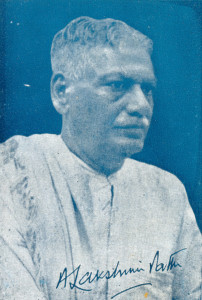
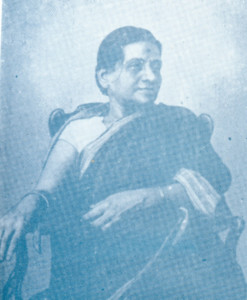
Dr. Lakshmipathi and his wife Rukmini.
The death of Pundit Gopalacharyulu on September 29, 1920 threw the Ayurvedic College into turmoil. It was closed the same day, with 50 students facing an uncertain future. The next afternoon a meeting was held at the SKPD Ayurvedic Hospital under the auspices of the Madras Ayurvedic Propagation Sabha and discussions were initiated on the possibility of a revival. The teaching faculty was willing to continue without salary but the rent and administrative expense proved prohibitive. There was no option but to close. It was at this juncture that Dr. A. Lakshmipathi stepped in, filling out a cheque for Rs. 1,000 as indication of his seriousness in the matter.
The College was shifted close to his Andhra Ayurvedic Pharmacy, which he had begun just a few months earlier with a capital outlay of Rs 50,000 largely bankrolled by the Raja of Mungala, a wealthy Telugu landowner. This was according to Dr. Lakshmipathi located on Tramcar Road, which research reveals was close to Harris Road (present day Adithanar Salai). He was designated Principal and several pundits were brought on board as faculty. Largely at Lakshmipathi’s prodding, several District Boards and Municipalities came forward with scholarships for the students and its future appeared secure.
The Government at this time appointed a Committee led by Sir Mohammend Usman to study the various schools of Indian medicine in practise. The report was published in 1923 and as per the recommendations of the same, the then Premier, P Ramarayaningar, the Rajah of Panagal came forward to set up an Indian School of Medicine (ISM), offering his property Hyde Park Gardens in Kilpauk for the same. The institution, founded in 1925, struggled for three years in the face of a strict Congress diktat that students ought not to join any Government-sponsored college. Moreover, students preferred the College run by Dr. Lakshmipathi. Feeling that it was not correct to compete with the Government, he decided to wind up his institution and encouraged the students to move to the ISM. The Madras Ayurvedic College therefore closed in 1928. But by then, its indefatigable Principal had already been spending considerable time on his next venture – an Ayurvedic Health Farm in Avadi.
This had come about in 1919, by when Dr. Lakshmipathi was a busy Ayurvedic practitioner. Patients came from all parts of India and it became his responsibility to find lodgings for them. He managed initially by renting houses along Harris Road but soon ran out of options. It became clear that he needed a large swathe of land where he could put up a guesthouse of some kind. He initially settled on four acres at Guindy but the Race Course was expanding and began eyeing the space. Having embarked on a property hunt once again, Dr. Lakshmipathi found what he wanted at Avadi. As to how he chanced upon it is an interesting story and speaks much about the Avadi of 1919.
He had gone there to treat a patient on a Sunday and by the time he could leave it was 7.30 pm. Having reached the station he found that the last train had left and he had no option but to eat and sleep at the residence of the person he had gone to treat. Waking up next morning, Dr. Lakshmipathi went for a walk and found the place charming:
“I saw a beautiful lotus tank which was known as Antharadi Kolam. Due to the green paddy fields in the area it was a very pleasant sight in the month of December. Yagna was performed at this site in the olden days. There were huge peepul and neem trees. The actual name of the tank was Anantha Narayana Deekshitulu Koneru. It seemed he had performed a yagna here in ancient times. There was forest all around.”
All of this in Avadi! It must however be remembered that there is still an area named Thamarai Kulam here. On coming to know that the land cost was Rs 100 per acre here (!!), Dr. Lakshmipathi began buying. His initial purchase was four acres. He then acquired a neighbouring property containing 500 mango trees, all planted by Nawab Humayun Jah Bahadur and then owned by the leather baron and philanthropist Nawab C. Abdul Hakim. The latter on coming to know that space was needed for a health farm, leased 112 acres at Rs 400 per year for a period of 11 years. Eventually, Dr. Lakshmipathi acquired this and more and by the late 1930s owned 300 acres in the area. He named it Hakim Nagar after the businessman-philanthropist who first leased the land to him.
On January 13, 1926, Dr. Jacob Aron Chowry Muthu, the noted tuberculosis specialist and owner of the sanatorium in Tambaram, laid the foundation stone of the Arogya Ashrama at Avadi. The first kuteer or hut was declared open a year later by A. Kaleswara Rao, freedom fighter and later first Speaker of the Andhra Pradesh Legislative Assembly. The Arogya Ashrama flourished with visitors describing it as a paradise on earth.
The All India Ayurvedic Directory of 1938 had this to say about the place – This Health Resort is situated within easy reach of Madras on an elevated plain of about 200 acres at a height of over 140 feet above sea level. Its elevation its cool shades, its green pastures and its loose sandy soil amidst the forest surroundings make it an ideal place for a sanatorium. Numerous patients have been treated in the Health Resort for various ailments by having recourse mainly to Nature’s methods and very satisfactory results have been obtained.
M.M. Kaviraj Gananath Sen of Calcutta says:
I not only visited but enjoyed the fresh air and idyllic surroundings of this Ashram for five days and was much the better for it. The charming atmosphere and the excellent arrangements would attract any townsman here, particularly if his nerves cry for rest and tone. The plan of having units of family wards at long distances from one another is far superior to the usual hospital crammed with patients living in the midst of agony and death occurring here and there. Dr. Lakshmi Pathi has undoubtedly conferred a boon on his countrymen. I believe that this Ashram has a great future. It should be a model for other Ashramams, which must be founded and worked on similar lines in all parts of India.
During the Second World War, the Government planned several defence establishments at Avadi and acquired the Arogya Ashrama for it. Dr. Lakshmipathi was compensated and some of this money came in for use when his son-in-law, Dr. B. Ramamurthy, the father of neurology in India, set up the first department in the country for this discipline at the General Hospital. Much of the remainder went into the establishment of the Dr. A. Lakshmipathi Neurological Centre at the VHS, Taramani. Both the GH and VHS have buildings commemorating Dr. Lakshmipathi. Several other health facilities and annual orations in his memory came up with the rest of the money. Not forgotten was the Venkataramana Ayurveda College, Mylapore, which got Rs. 50,000. The man who made all this possible died in 1962.
In 1946, his wife and freedom fighter Rukmini, became Minister for Public Health in the T. Prakasam Ministry at Madras. It was at her initiative that the ISM in Kilpauk was upgraded to a college. Rukmini Lakshmipathi died in 1951 and Marshall’s Road in Egmore is now named after her.
The author thanks Karthik Bhatt for giving him the idea for this story and also providing the link to the All India Ayurveda Directory, 1938. Many thanks to Rukmini Amirapu, granddaughter of Dr. A. Lakshmipathi, for sharing a copy of his biography.
(Concluded)
Panagal Park – and the Metro rail scare
by The Editor
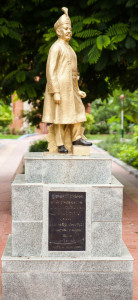
Residents of T’Nagar and those elsewhere in the city who are concerned about green cover are a worried lot. It is learnt that iconic Panagal Park, located in T’Nagar will soon be taken over by Chennai Metro Rail Limited (CMRL) for Phase II of the underground service. T’Nagar is an area that regularly tops city statistics when it comes to particulate matter in the air and Panagal Park has been doing its best to contain pollution. Doing away with it can have serious consequences.
CMRL has however been at pains to deny that it is planning a permanent takeover. A query sent by Madras Musings to the Managing Director, CMRL had a response to this effect. “Only a part of the park is being taken and that too will be restored as a park with better greenery and facilities as per requirements of the people. It is only an underground station,” was the text of the response received. That sounds quite reassuring but those who have had experience of prior dealings with CMRL on such matters beg to differ.
Contract Farming – revenue generator through exports
by A Special Correspondent
This is the second and concluding part of the article on what needs to be done to make the Tamil Nadu Contract Farming Act a success
Pavithra’s Perspective
The Empty Cupola
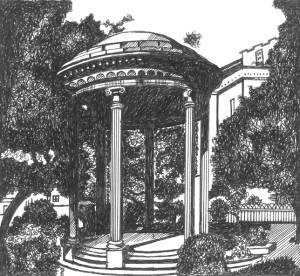
Until my twenties, what little I knew of Chennai’s distinguished fort was confined to the one trip I’d made as a teenager to the Fort Museum – where I’d seen a huge portrait of Queen Alexandra and promptly fallen in love – but there my knowledge ended. Some years later, asked to do a piece on selfsame Museum for The Times of India, I visited the Fort. I submitted to the checks, the signed registers, crossed the moat (which I didn’t even realize until later was one) and made a beeline for my destination, when I paused by the bottom of the steps.
Tributes to Mr. Muthiah
Mylapore Times and Madras Day
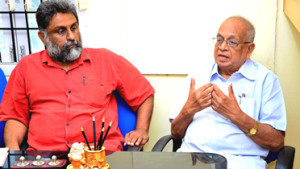
Mr. Muthiah with Vincent D’Souza during one of the Madras Week meets.
When he held my hand and pressed it even as he was about to sign what must be the last of his books ( the 3rd volume and an index of ‘Madras: a 400-year record of the First City of Modern India’), I felt the emotions that were in him.
The time to bid goodbye could be any day, soon. Muthiah went quietly: the way he would have wanted.

